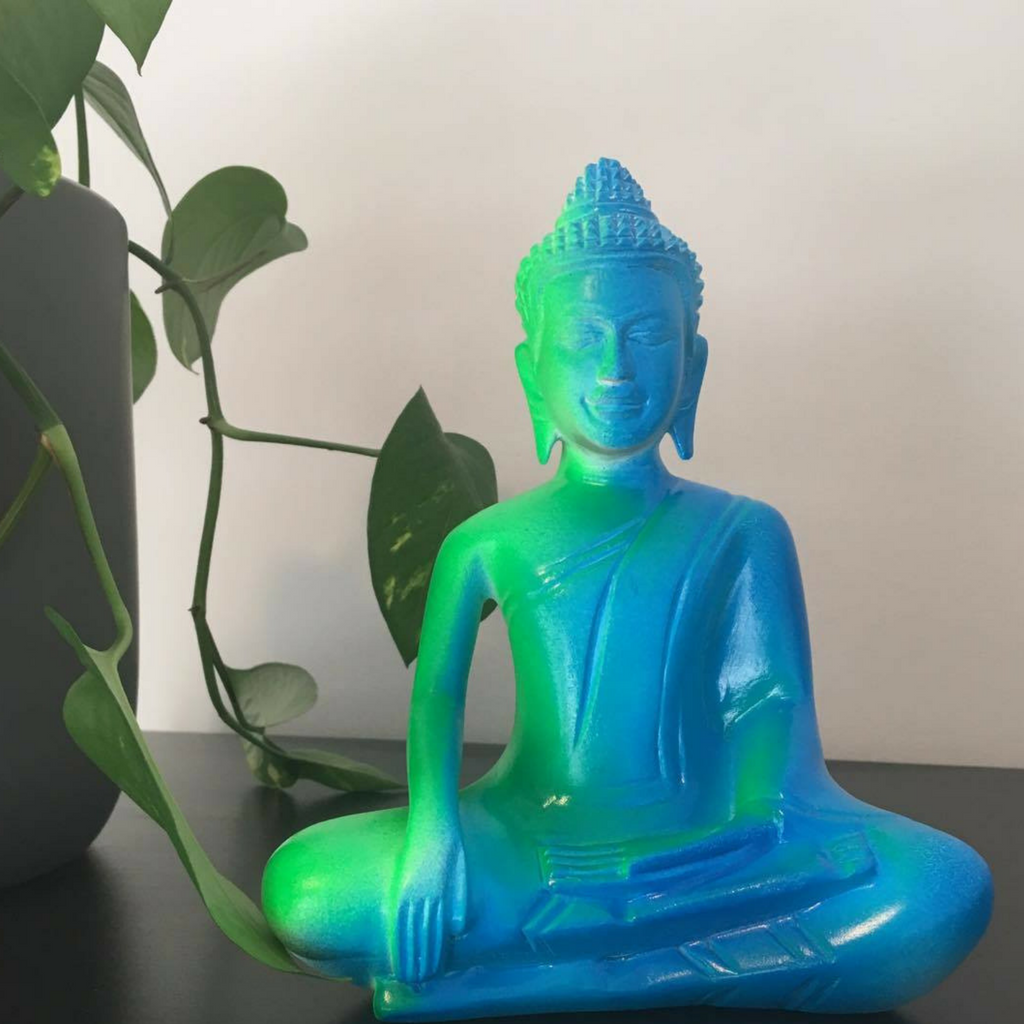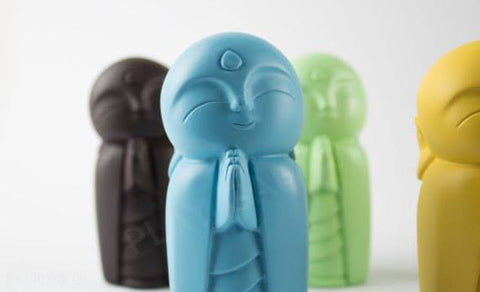ETHICAL CURATED LIFESTYLE STORE.
ETHICAL CURATED LIFESTYLE STORE.
Women
JEWELLERY
Homewares
SHOP BY BRAND OR LOCATION
Shop By Gift Guides

Buddha Statues 101 - All The Buddha Poses Explained!
septiembre 26, 2018 5 lectura mínima 11 Comentarios
During the 5th Century BCE, Siddhartha Gautama was born. In Sanskrit, Siddhartha means ‘He Who Achieves His Goal.’ Siddhartha was born into royalty and soon realised that living a conditioned life was not going to bring eternal happiness or protection from suffering. After coming face to face with suffering, Siddhartha decided to leave his royal duties on the quest for enlightenment. He left secretly and over six years, practiced with meditation teachers and finally decided to remain in meditation underneath the Bodhi Tree until, after conquering much fear and temptation, he reached enlightenment.
He became Buddha, The Awakened One, and has been signified by Buddha statues for centuries. Buddha statues are more than a physical depiction of Buddha, they all have meaning. Each pose, posture, expression and hand gesture is significant to the life of Buddha. There are over 100 different poses that illustrate the life of Buddha, also called an asana or attitude, and hand gestures are referred to as a Mudra. You can see many Buddha statues in temples across the world, here are just a few of the most popular ones.
Explore our beautiful range of artisan-crafted Buddha statues here.
Popular Buddha Poses
Teaching Buddha
Wisdom, understanding and fulfilling destiny are represented in the Teaching Buddha statue. The Buddha holds the right hand positioned at shoulder level with the tips of the thumb and index finger touching and forming a circle. The palm of the right hand faces inwards and the left hand has its palm facing up to receive, and may be positioned near the lap. The Teaching Buddha represents the life of Buddha after his enlightenment when he gave his first sermon. He gave this sermon to a small group of disciples, disciples who had previously belittled the Buddha. The Teaching Buddha statue is perfect for someone who is studying or focusing on their spirituality.
Laughing Buddha
Have you been wondering why the Laughing Buddha - also known as Happy Buddha, Prosperity Buddha, Ho Tai or the Fat Buddha - is fat? This might answer your question! The Laughing Buddha is actually not the Buddha at all. The Laughing Buddha is an admired Chinese Monk who was well known for his Buddhist sermons and extremely popular because of the bag full of gifts he brought for the children who learnt the Dharma. You could say he is like a Buddhist Santa Claus. The Laughing Buddha is depicted in a number of ways including with his arms up above his head reaching towards the sky, holding a sack over his shoulder or simply sitting with his stomach out, waiting for a good old rub. The Laughing Buddha represents happiness, good luck and plenitude.
Protection Buddha
Protection Buddha sits with his right hand raised and facing outwards. This hand pose symbolises a shield. The pose can also represent a second meaning of overcoming fear. Normally, the Protection Buddha is sitting or standing with the left hand either extended out or the palm in the lap. Protection Buddha means courage and offers protection from fear, delusion and anger.
Meditation Buddha
In this pose, Buddha has both hands face up in the lap with legs crossed in a Double Lotus pose or a Single Lotus pose. Buddha’s eyes are also normally half-closed or fully closed as the statue represents focused concentration. The profile of the statue is also shaped similarly to a triangle to represent stability. This Buddha statue is great for people looking to create peace and calm in their lives. It’s also the perfect addition to a space in your home where you like to relax and unwind. Click here to purchase a meditation Buddha in your lucky colourReclining Buddha
Also known as the Nirvana Buddha, the Reclining Buddha represents Buddha in the final hours on earth before death and entering into Nirvana. Buddha is depicted lying on the right hand side on top of a table. It is due to Buddha’s enlightenment that he was able to evade the birth, death, rebirth cycle and enter into Nirvana. Read more about the time we visited Wat Pho in Bangkok, Thailand to see the Reclining Buddha.Medicine Buddha
With the right hand facing downward, fingers extended towards the ground, palm facing out and a bowl of herbs resting in the left hand, the Medicine Buddha is responsible for delivering medicinal knowledge. The right hand facing outwards is the Buddha giving a blessing to humankind. The Medicine Buddha is perfect for those seeking good health.Calling The Earth To Witness Buddha
When visiting Thai temples, you will notice that this pose, otherwise called the Earth Touching Buddha, is the most common. This pose is depicted by the Buddha with legs crossed, the left hand in the lap and the right hand pointing to the ground with the palm facing inward towards Buddha. This pose represents the Buddha’s moment of enlightenment. But in the six days leading up to Buddha’s enlightenment, he faced the Demon of Illusion who made reaching enlightenment very difficult. Buddha called the Earth Goddess to witness that he had achieved enlightenment so that it could be shared with the rest of the world. The Earth Goddess wrung her hair, releasing flood waters that swept away the Demon. Click here to Afterpay our Earth Witness Buddha
Walking Buddha
The Walking Buddha represents grace and internal beauty. Buddha has the right hand raised and facing outward and the left hand swings beside the body with the left foot behind. This statue has a graceful appearance, depicting Buddha’s return to earth after delivering a sermon in Heaven. The Walking Buddha’s right hand depicts a gesture of reassurance.
Contemplation Buddha
Represented by the Buddha holding both arms against the chest with palms facing in and the right arm on the outside of the left, Contemplation Buddha symbolises silent determination and tolerance. Contemplation Buddha is for anyone looking to increase spiritual confidence. It also promotes humility.
Thai Buddha Days of the Week
In Thailand, there is a different Buddha image for each day someone is born. When you visit a temple, you may see a row of different Buddhas holding an alms bowl for you to donate on the relevant day you were born. If you were born on a Wednesday however, it’s a little different. Wednesday has two Buddha’s so you will need to check whether you were born between 6am to 5.59pm or 7.00pm to 5.59am to determine which Buddha to revere.
Buying a Buddha gift for someone but don’t know the day they were born?
Enter their birthday here and it will tell you the day.
Monday – Pacifying the Relatives Buddha A person born on a Monday is serious, has a good memory and loves to travel. This person is likely to be in a skilled occupation.
Tuesday – Reclining Buddha This person is serious, brave and active.
Wednesday – Receiving Buddha (Morning) The Blessed One Buddha (Evening) The person born on Wednesday morning is polite, artistic and emotional.
Born on Wednesday evening? This person is hard-working and honest.
Thursday – Meditating Buddha This person is peaceful, calm and honest.
Friday – Contemplating Buddha This person is fun-loving, friendly and ambitious.
Saturday – Protection Buddha This person is calm, logical and a bit of a recluse.
Sunday – Restraint Buddha This person is respectable, wise, loved by friends and family.
Buddha Statues – more than just exotic décor
Buddha statues and figurines are so much more than a dust-catching object. When you truly understand the meaning behind Buddha poses, the piece becomes so much more special because every time you look at it, you are reminded of the messages of Buddha and encouraged to live a more mindful life.
11 Respuestas
Anita
febrero 08, 2023
Hi! I love your article…I have a carved resin Buddha with 3 children under his coat. Idk meaning! Can’t find this anywhere. Does anyone know? Thanks! Anita
Debra Deason
febrero 08, 2023
What does it mean if I found a Buddha head and it appears that she is winking
Daisy
febrero 08, 2023
Can someone help me with what this budha means for me. I was laying down and i saw a sitting Buddha with a dark blue robe with gold trimmings on his robe, sitting in front of my front door as i headed out. one of his hand was placed on the left knee and i could’nt see the other hand because i saw him sideway. What does it mean.
Andrew
noviembre 11, 2020
Thanks for this, great article.
Margaret Huebsch
julio 23, 2020
I didn’t see meaning of kneeling Buddha? Is there one?
Sandra Naidoo
julio 23, 2020
VERY INTERESTING
Patricia Gallatin
julio 23, 2020
Hi!
I have a Buddha in an unusual pose. His eyes are open, the left hand is raised but facing down in the teaching position (forefinger and thumb in a circle/teardrop) . The right hand is on the thigh palm facing up and in the teaching position.
The legs are tucked under but both facing to the right. Not crossed. The head piece is a pointed spiral.
Can anyone help me deciphering this?
Patricia Gallatin
julio 23, 2020
Hi!
I have a Buddha in an unusual pose. His eyes are open, the left hand is raised but facing down in the teaching position (forefinger and thumb in a circle/teardrop) . The right hand is on the thigh palm facing up and in the teaching position.
The legs are tucked under but both facing to the right. Not crossed. The head piece is a pointed spiral.
Can anyone help me deciphering this?
Tara Laroche
junio 29, 2020
I love the Buddhist thing use have
Libby
junio 29, 2020
Very informative thank you
Dejar un comentario
Los comentarios se aprobarán antes de mostrarse.
Subscribe
Sign up to get the latest on sales, new releases and more …



Geri Bartlett
febrero 08, 2023
Extremely interestig article has answered quite a few questions that were swirling thru my head—- thank you.